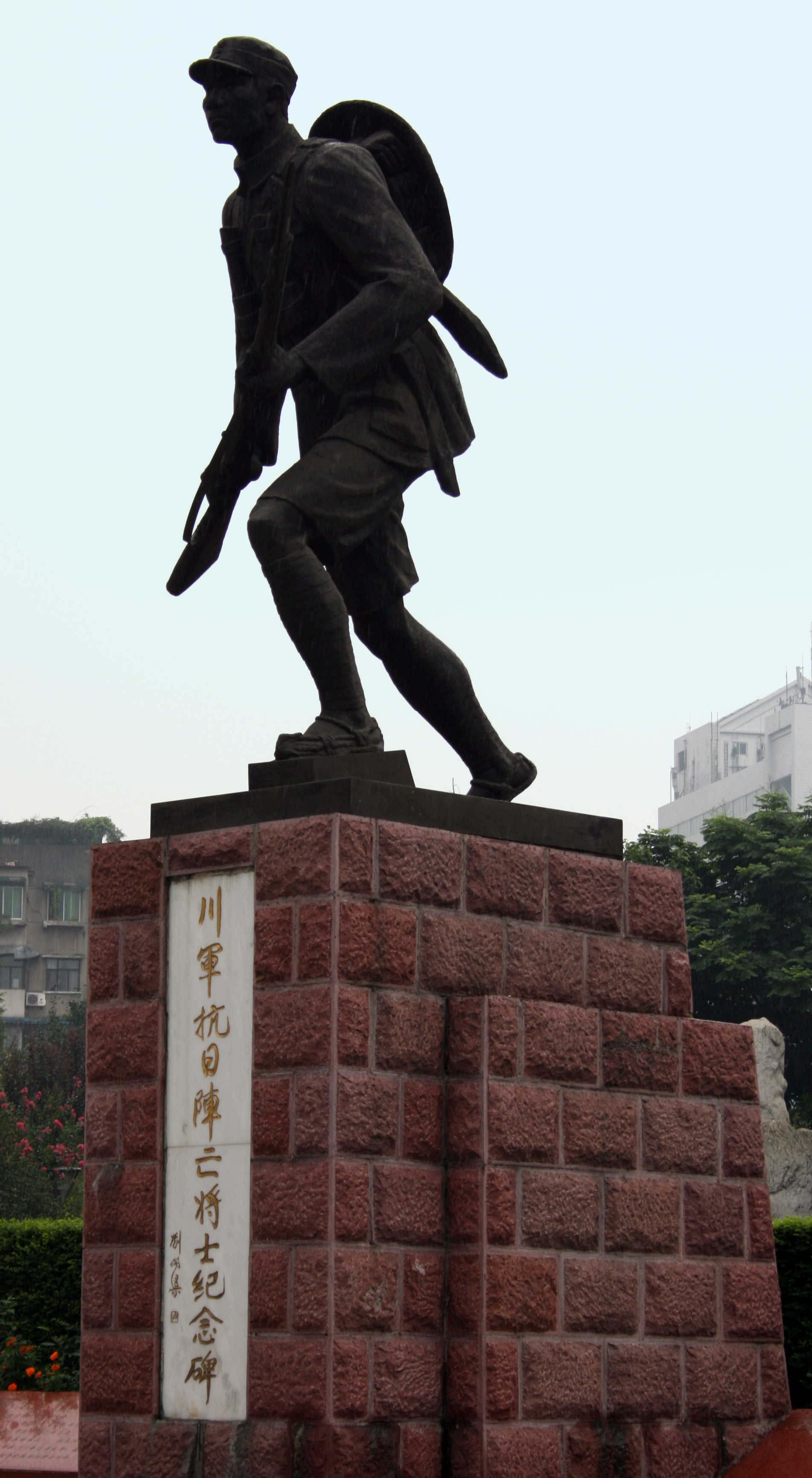Sichuan Army on:
[Wikipedia]
[Google]
[Amazon]
 The Sichuan clique was a group of warlords in the warlord era in China. During the period from 1927 to 1938,
The Sichuan clique was a group of warlords in the warlord era in China. During the period from 1927 to 1938,
 The Sichuan clique was a group of warlords in the warlord era in China. During the period from 1927 to 1938,
The Sichuan clique was a group of warlords in the warlord era in China. During the period from 1927 to 1938, Sichuan
Sichuan (; zh, c=, labels=no, ; zh, p=Sìchuān; alternatively romanized as Szechuan or Szechwan; formerly also referred to as "West China" or "Western China" by Protestant missions) is a province in Southwest China occupying most of the ...
was in the hands of five warlords: Liu Xiang, Yang Sen, Liu Wenhui
Liu Wenhui (; 1895 – 24 June 1976) was a Chinese general and warlord of Sichuan province (Sichuan clique). At the beginning of his career, he was aligned with the Kuomintang (KMT), commanding the Sichuan-Xikang Defence Force from 1927 to 1929. ...
, Deng Xihou, He Zhaode, and Tian Songyao
Tian Songyao, also Romanized as Tin Chung-yao (田颂尧 (1888–1975), was a warlord of the Sichuan clique, Kuomintang general, later official of People's Republic of China.
Tian Songyao was born on 1888 in Jianyang, Sichuan. Tian joined the Si ...
, with minor forces being Xiong Kewu and Lü Chao
Lü Chao (March 9, 1890 July 20, 1951), born in Xuzhou Fu, Yibin County, Sichuan, was a military and political figure in the early Republic of China's Warlord Era, active in his home province of Sichuan. He is known for fighting against Liu C ...
.
Introduction
After Qing dynasty's collapse, not one warlord had enough power to take on all the others at once, so many small battles occurred, pitting one warlord against another. The Sichuan Clique was divided into smaller warlord groups, or Defense Zones, separated from each other with distinct military, political, and economic boundaries. Large conflicts seldom developed, plotting and skirmishing characterized the Sichuanese political scene, and ephemeral coalitions and counter-coalitions emerged and vanished with equal rapidity. However, Liu Xiang was the most influential of the Sichuan warlords. He controlled Chongqing and its surrounding areas. This region, sitting on the banks of theYangtze
The Yangtze or Yangzi ( or ; ) is the longest river in Asia, the third-longest in the world, and the longest in the world to flow entirely within one country. It rises at Jari Hill in the Tanggula Mountains (Tibetan Plateau) and flows ...
river, was rich because of trade with provinces down river and therefore controlled much of the economic activity in Sichuan. From this position of strength, between 1930 and 1932 General Liu Wenhui and Liu Xiang improved their forces, organizing a small airforce and an armored car force.
In 1935 Liu Xiang ousted his uncle and rival warlord, Liu Wenhui, becoming Chairman of the Government of Sichuan Province with the support of Chiang Kai-shek.
In economic affairs, there was abusive minting and issuance of currency.Zheng, Qidong, et al. Brief History of Inflation in China. Paths International Ltd., 2013. p. 45
World War II
In theSecond Sino-Japanese War
The Second Sino-Japanese War (1937–1945) or War of Resistance (Chinese term) was a military conflict that was primarily waged between the Republic of China and the Empire of Japan. The war made up the Chinese theater of the wider Pacific Th ...
, the Sichuan clique made a huge contribution to oppose the Japanese army. Data shows all numbers of dead or injured soldiers (3.26 million in total), including 2.24 million from Sichuan clique. Especially, from 1939 to 1945, the death numbers of soldiers has 646,000 from Sichuan within a total 850,000. In the Battle of Shanghai
The Battle of Shanghai () was the first of the twenty-two major engagements fought between the National Revolutionary Army (NRA) of the Republic of China (ROC) and the Imperial Japanese Army (IJA) of the Empire of Japan
The also ...
, almost all 170,000 soldiers from Sichuan clique fell in battle, with only 2,000 managing to retreat to Hubei Province
Hubei (; ; alternately Hupeh) is a landlocked province of the People's Republic of China, and is part of the Central China region. The name of the province means "north of the lake", referring to its position north of Dongting Lake. The prov ...
. Nine generals of the National Revolutionary Army died in World War II
World War II or the Second World War, often abbreviated as WWII or WW2, was a world war that lasted from 1939 to 1945. It involved the vast majority of the world's countries—including all of the great powers—forming two opposing ...
, of whom generals Li Jiayu, Wang Mingzhang and Rao Guohua were commanders from the Sichuan clique.
Memento
On August 15, 1989,Chengdu
Chengdu (, ; simplified Chinese: 成都; pinyin: ''Chéngdū''; Sichuanese pronunciation: , Standard Chinese pronunciation: ), alternatively romanized as Chengtu, is a sub-provincial city which serves as the capital of the Chinese pro ...
City Government constructed new sculpture for memento at Wannian, Chengdu.
See also
* Warlord era * List of Warlords *New Army
The New Armies ( Traditional Chinese: 新軍, Simplified Chinese: 新军; Pinyin: Xīnjūn, Manchu: ''Ice cooha''), more fully called the Newly Created Army ( ''Xinjian Lujun''Also translated as "Newly Established Army" ()), was the modernised ...
, predecessor of Sichuan clique
References
{{DEFAULTSORT:Sichuan Clique Warlord cliques in Republican China History of Sichuan